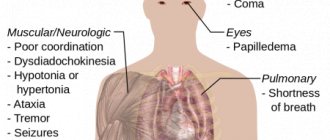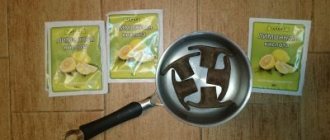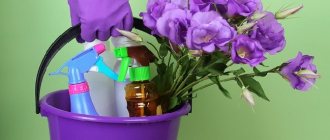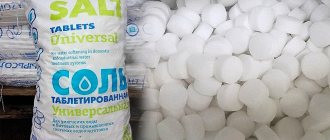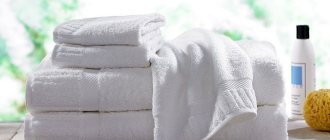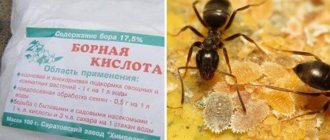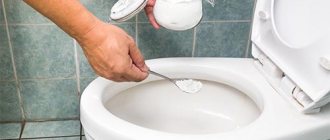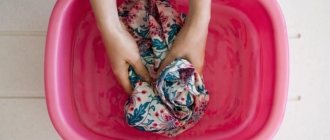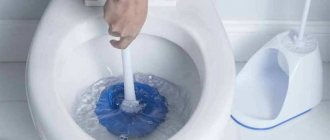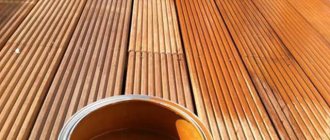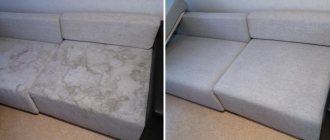Hydrolysis
This method is suitable if you need to clean a tool of complex shape, which consists of a large number of parts.
There is no point in sanding or brushing such elements, so hydrolysis remains. Its principle is purification almost at the molecular level. During hydrolysis, hydrogen is released, it can quickly ignite, so when working it is important that the room is well ventilated
- A water container made of dielectric material (for example, plastic).
- A piece of stainless steel (for example, a piece of new stainless steel pipe cut in half).
Screenshot of a video from the AutoManiac channel https://www.youtube.com/watch?v=YBYs6x_MFpU
- Drain cleaner or caustic soda.
- DC source. For example, you can use a car charger or a computer power supply.
Healthy! Some don't use stainless steel. Instead, the hydrolysis process is carried out in a metal bucket into which a baking soda solution is added. This option is also suitable. But it must be taken into account that during hydrolysis the liquid is very heated. In a plastic bucket it reaches 50 degrees, in a metal container the heating will be greater.
The rust removal process itself is as follows:
- Place the stainless steel in a plastic bucket. The stainless steel should be located along the wall of the container, thereby creating a kind of screen.
Screenshot of a video from the AutoManiac channel https://www.youtube.com/watch?v=YBYs6x_MFpU
- In order to get good contact, it is necessary to first clean a small area on the instrument (the “crocodile” will be installed on it later).
- We lower the tool into the bucket. At the same time, he should not be allowed to touch the screen. Therefore, the part needs to be suspended (for example, using a clamp and a small plastic pipe, which we will place on the edges of the bucket).
Screenshot of a video from the AutoManiac channel https://www.youtube.com/watch?v=YBYs6x_MFpU
- Fill the bucket with water so that it completely covers the instrument.
- Add pipe cleaner (2-3 caps per 1 bucket of water) and mix it well with water.
- The “+” (red wire) must be connected to the stainless steel, and the “minus” (red-black wire) must be connected to the part being cleaned.
Screenshot of a video from the AutoManiac channel https://www.youtube.com/watch?v=YBYs6x_MFpU
- We connect the charger to get a voltage of about 9-12 Volts at the output. The stronger the current, the faster the cleaning will occur.
- The liquid will foam a little. This is a normal hydrolysis process.
- Leave the part in this state overnight.
After this, all that remains is to remove the tool and clean it of flaking rust. For processing simple tools, this method is labor-intensive. But for large elements (for example, a rusty vice) it’s perfect. You can also clean car parts using this method. For pliers, screws, bolts and other things, you should choose the simpler cleaning methods described above. The best option is citric acid and vinegar.
LiveInternetLiveInternet
—Categories
- "Surganova and Orchestra" (8)
- =Ivan advises= (168)
- tomatoes (33)
- garden (30)
- fertilizer (22)
- seedlings (17)
- green manure (14)
- health (14)
- cucumbers (13)
- garlic (12)
- pests (8)
- potatoes (3)
- pepper (1)
- Ivan advises. (40)
- Ivan advises2. (44)
- Ivan advises 3. " (eleven)
- Procvetok school (12)
- Android (5)
- Favorite garden (319)
- fertilizers (33)
- pests (15)
- strawberry (3)
- shrubs (16)
- trees (35)
- vegetable garden (17)
- cucumbers (14)
- pepper (16)
- tips (40)
- tomatoes (15)
- flower garden (35)
- flower garden2 (34)
- indoor flowers (14)
- cuttings (25)
- my garden (5)
- Cooking (655)
- eggplant (27)
- jam (18)
- mushrooms (21)
- dessert (9)
- blanks (21)
- snack (36)
- zucchini (35)
- cereal (17)
- cabbage (20)
- potatoes (14)
- chicken (41)
- pancakes (6)
- meat (45)
- cucumbers (9)
- fish (24)
- soup (19)
- salads (29)
- sauce (27)
- multicooker (16)
- pepper (35)
- liver (11)
- pies (39)
- cookies (25)
- pies (17)
- pizza (6)
- cupcake (18)
- cake (32)
- pumpkin (23)
- tea, coffee (30)
- =Lyrics= (50)
- Sea (50)
- Sea2 (50)
- Sea3 (7)
- Dancing (32)
- Autumn pictures (50)
- Floral (50)
- Floral2 (48)
- Graphics (24)
- Illustration (50)
- Illustration2 (17)
- Painting (50)
- Painting2 (50)
- Painting3 (50)
- Painting4 (50)
- Painting5 (50)
- Painting6 (49)
- Painting7 (50)
- Painting8 (47)
- Photonaturalist (24)
- St. Petersburg2 (50)
- St. Petersburg (49)
- St. Petersburg3 (49)
- St. Petersburg4 (41)
- Spring theme (40)
- Summer theme (28)
- Wintertime (50)
- Wintertime2 (49)
- Аquarelle2 (51)
- Аquarelle (48)
- Аquarelle3 (0)
- Abkhazia (20)
- Fortune telling (50)
- Cities (52)
- Dinskaya (18)
- Adler (12)
- Europe (32)
- Women... (54)
- Woman= (50)
- =Woman= (47)
- Saxophone (14)
- Zodiac Signs (20)
- Interesting= (49)
- Interesting (38)
- Cinema (48)
- Cinema2 (22)
- China (17)
- Clipart (172)
- spring (14)
- girls (7)
- winter (20)
- autumn (9)
- birds (18)
- dividers (4)
- miscellaneous (50)
- scraps (20)
- flowers (24)
- Clips (29)
- Computer (22)
- Krasnodar (50)
- Lyrics (44)
- Moscow (17)
- Thinking out loud (50)
- Thinking out loud2 (50)
- Thinking out loud3 (50)
- Thoughts out loud4 (49)
- Thoughts out loud5 (49)
- Thoughts out loud7 (50)
- Thoughts out loud6 (49)
- Thoughts out loud8 (50)
- New Year (50)
- Wallpaper for work table (23)
- Player (237)
- We weave from newspapers (33)
- Useful tips (38)
- Useful (40)
- Holidays (39)
- Signs (29)
- Proverbs (50)
- Proverbs2 (3)
- Travel (40)
- Repair (30)
- The best of the best. (49)
- Simoron (21)
- Tests (37)
- I sew myself (28)
- Editor (17)
- Humor (20)
- Humor= (50)
- Windows 10 (48)
- Liveinternet (29)
- Favorite melody (50)
- Favorite melody2 (51)
- Knitting (114)
- pullovers (40)
- tops (33)
- patterns (21)
- hats (18)
- Favorite melody3 (7)
- Photoshop (403)
- filters (43)
- brushes, styles (18)
- masks (27)
- lessons (48)
- lessons (44)
- studying (49)
- studying= (45)
- collages (44)
- lessons Millada Kataleya (38)
- backgrounds (23)
- fonts, actions (25)
- Crochet (7)
- Craftswoman2 (48)
- cardboard (14)
- Craftswoman (45)
- ProShow Producer (42)
- Health (697)
- stomach (41)
- quarantine (15)
- Doctor Komarovsky (9)
- hair (9)
- head (19)
- pressure (34)
- medicines (33)
- healing exercise (50)
- treating feet (21)
- face (36)
- medical doctor (14)
- mudras (25)
- neurosis (15)
- osteochondrosis (29)
- benefits of products (35)
- help yourself (34)
- help yourself2 (45)
- nature heals (14)
- cold (28)
- hands (16)
- heart (15)
- sleep (6)
- body (16)
- herbalist (41)
- herbalist2 (45)
- strengthen muscles (1)
- Vinegar heals. (7)
- losing weight (32)
- thyroid (10)
How to extend the effect?
The protective zinc layer formed on the surface can protect the metal from corrosion for 4-6 weeks. To increase this gap, you can varnish the treated area - in this way it will be completely protected from the aggressive influence of the external environment. But this method has disadvantages: on visible elements (doors, hood), transitions in the varnish can be very noticeable.
Therefore, it is better to carry out preventive treatment with an acid composition every 1-1.5 months to avoid erasing the protective layer. In addition, you should keep the car clean and dry; after driving in snowy or rainy weather, be sure to dry the underbody.
For maximum effect, it is advisable to equip the garage with good temperature control and ventilation systems. To avoid cracks and paint peeling, do not wash the car with hot water in the cold season. Laminating the body can also help - the polymer film will reliably protect against temperature changes and environmental influences.
How and with what to remove rust from metal
Removing traces of corrosion from various objects has its own specifics that must be taken into account.
From the body of a car
Rust often forms on the car body. The following products are best suited to remove it:
- Orthophosphoric acid. Its solution is applied to a sponge, which is used to wipe the car body.
- Zinc. Mixtures are made from it that allow you to get rid of contamination after the first treatment.
From a water tap
The optimal remedy for rust on metal, especially for cleaning enameled metal surfaces, is Adrilan, produced for washing household appliances. Since it is very concentrated, it is diluted in warm water before use.
An effective cleaning agent, and not only against rust, but also against any contaminants.
From a bicycle
You can easily get rid of rust stains that appear on a bicycle frame over time using citric acid. Moreover, before removing rust from metal, the surface must be degreased, and then rinsed and dried thoroughly.
From skates
If skates are stored for a long time in conditions of high humidity, a rusty coating begins to form on them. You can remove it using a mixture of baking soda and lemon juice. To do this, the components are mixed until a mushy substance is obtained, which must be applied to the contaminated surface for an hour and a half. After this, the skates need to be washed and dried.
Effective folk remedies will help eliminate rust stains from skates.
From a horseshoe
An old rusty horseshoe can be cleaned with oxalic acid. To create a solution, you need to mix acid and boiled water in a ratio of 1 to 12. A horseshoe is placed in the resulting liquid for forty minutes, after which it is washed with running water.
From the tools
Metal tools that are rarely used will corrode over time. You can clean them from rusty deposits using a vinegar solution. To prepare it, you need to mix white vinegar with warm water in equal proportions. The resulting liquid is applied to contaminated instruments, after which they can be easily cleaned with a wire brush or sponge.
Pour vinegar into a container large enough to fit the spoiled item. Immerse the product in a container with product.
Once cleaned, polished metal instruments can be treated with a solution of gasoline and wax or paraffin to protect them from further corrosion. To obtain it, you need to add paraffin or wax to gasoline heated in a water bath.
From the nut
You can clean the nuts from corrosive deposits using a vinegar solution. To do this, dilute 100 ml of white vinegar in a bucket of water, after which all rusted nuts are placed in a container for three to four hours. After this time, the nuts are washed with clean water and wiped off any remaining rust.
Cleaning small household items
All of the above methods can be used to clean small metal objects. The only difference is the ability to place the rusty product entirely into the product being used.
Follow all the above rules and you will notice that rust can be removed quickly and without much effort.
Harm to health
The product is potentially dangerous and toxic to the body if used incorrectly. If it comes into contact with the skin, it causes burns, burning, and irritation. Even low concentrated acid causes irritation upon prolonged contact.
If the substance is accidentally ingested, the following symptoms may occur:
- difficulty breathing;
- convulsions;
- vomit;
- kidney damage;
- hypocalcemia;
- stomach ache.
Prolonged contact with the skin causes cyanosis and gangrenous changes.
Industrial methods of prevention
In addition to forced rust removal, there are methods to prevent metal oxidation. These include:
- galvanic treatment;
- cathodic protection;
- application of inert coatings.
It is problematic to apply these methods in everyday conditions due to the lack of appropriate equipment and the complexity of technological processes.
Galvanization
The method involves depositing a thin layer of a substance that is slightly susceptible to oxidation onto ferrous metal using electrolysis. The nuance of the situation is that as soon as the protection is broken, corrosion immediately begins.
Cathodic protection
A method that involves the use of a direct current source that creates a zone of negative electrical potential on the protected surface. Successfully used on large objects (ships).
Special coatings
Protection methods using specially applied metal coatings may be no less effective than others. Typically, they are made using substances that do not react with condensation or moisture.
Galvanization
Coating with a layer of zinc perfectly protects the base metal from oxidation and makes it inert towards slightly aggressive environments. Widely used to protect body parts, in the manufacture of hardware and fasteners.
Tinning
The basis of the method is coating the metal with molten tin solder. The resulting layer resists oxidation well and prevents the spread of corrosion.
Chrome plating
It consists of applying a layer of chromium to components and parts, which is practically not susceptible to oxidation. Allows you to save money by replacing production from expensive stainless steel with production from ferrous metal followed by chrome plating.
Share link:
Painting materials
Before applying paint to a cleaned surface, it is better to prime it, but many modern compositions make it possible to do without a primer. The following paints are used for painting metal:
- epoxy, based on silicone resins with a hardener. High toxicity requires external use only;
- oil - a traditional composition, before using which steel products are pre-coated with primer. The presence of a pungent odor requires painting to be carried out in a well-ventilated area;
- alkyd – has good stability, does not require preliminary priming, can be applied in any conditions;
- acrylic - a modern type created on the basis of polymers. Non-toxic, easy to use, requires careful preparation;
- rubber – perfectly protects roofs and external elements exposed to precipitation.
These are classic paints and varnishes that are found everywhere and are popular. However, there are other, more specialized mixtures:
- primer-enamel applied specifically to rust, which prevents its development;
- anti-corrosion, preventing the entry of moisture and oxygen;
- forging, giving wear resistance;
- toxic nitro paints.
All of them can provide additional protection, as well as improve performance and reliability. All these actions are an important part of preparing products for further painting and increasing their service life.
Tags: Enamels and paints
A little chemistry to understand the process of rust formation on metal
Rust is a product of iron oxidation. Most often it is a chemical compound Fe₂O₃. This oxide gives a reddish tint. However, dark inclusions can often be observed.
They indicate that the metal has not only trivalent properties, but also divalent properties. Therefore, the oxide will be written with the chemical formula FeO.
Based on numerous studies, it has been established that Fe₂O₃ predominates. It occurs in 85...88% of cases.
Information for the curious. Iron is smelted from ore. It is usually denoted as a Fe₃O₄ compound, but this formula does not give the real picture. In nature, the compound occurs in blast furnaces at temperatures above 850 ⁰C.
In the open air, iron actively interacts with oxygen in the air. Therefore, an oxide film forms quite quickly. In practice, to prevent oxidative processes, the metal surface is protected.
The density of the oxide film can be different. If a steel object has been exposed to the open air for a long time, the metal may be riddled with holes consisting of oxide (rust). In fact, it completely loses its properties.
Items that have recently been left without additional protection are covered with only a thin coating. The thickness of the oxide film is measured in microns. In such a case, the strength of its adhesion is insignificant. It can be easily removed from the surface.
Attention! Iron oxide FeO is considered protective. If this particular compound is present on the surface, then it does not allow red rust (Fe₂O₃) to spread.
Bivalent oxidation occurs when the metal is heated above 250…270 ⁰С.
When smelting iron from ore under the influence of high temperature, processes of metal reduction with carbon and hydrogen occur:
- 3Fe₂O₃ + CO = 2Fe₃O₄ + CO₂;
- Fe₃O₄ + CO = 3FeO + CO₂;
- FeO + CO = Fe + CO₂;
- 3Fe₂O₃+ H₂ = 2Fe₃O₄ + H₂O;
- Fe₃O₄ + H₂ = 3FeO + H₂O;
- FeO + H₂ = FeO + H₂O
In addition to the formation of pure iron Fe, iron carbide Fe₃C is formed in the blast furnace process. The reaction of its formation occurs at a temperature of 950...1000 ⁰С.
3Fe + 2СО = Fe₃C + CO₂.
The flue gas contains carbon monoxide CO₂ and water vapor H₂O. At a temperature of 1536 ⁰C, iron Fe melts.
In nature, the opposite process occurs. At the same time, cast iron, due to its high iron carbide content, oxidizes several times slower than steel.
Important! Steel is considered a mechanical combination of iron and carbon, provided the content does not exceed 2.14%. As the carbon content increases, the alloy becomes cast iron
Where do rust stains come from?
Any family member, a five-year-old child or an adult man, can acquire a rusty stain. The most common reasons:
- Drying clothes on old or poorly painted radiators.
- When washing, there were foreign metal objects in the pockets: pennies, nails, bolts, keys.
- For drying, tucks with rusty springs were used or hung on steel wire.
- In the park we sat down on an unpainted, rusty bench.
- The equipment on the playground is poorly painted or has not been painted for a long time: slides, horizontal bars, ladders, swings.
- The clothes are equipped with steel fittings: rivets, locks, snakes, chains made of oxidizing metal.
Methods for chemical treatment of rusted metals
Phosphoric acid is a natural rust converter
Any rust remover contains acids. Solutions of mineral compounds – sulfuric, hydrochloric or phosphoric – are used against abundant layers. They give quick results, but require strict adherence to processing time. Overexposure causes damage to intact metal. When preparing solutions from these substances yourself, they must be diluted to a concentration of no more than 5%.
For light stains and delicate cleaning, organic acids are used - acetic, oxalic and formic. Their action can last for a long time, but at the same time the risk of harm to the item being cleaned is reduced.
Technical fluids are also used to remove rust:
- It is easy to remove only the deposit that has appeared with gasoline.
- Kerosene penetrates into the smallest cracks and gives good results when separating parts that have rusted to each other. Long-term soaking in it can eliminate serious corrosion without affecting healthy metal.
- Phosphoric acid is considered a natural rust converter. It should be applied to the damaged area and after 1-2 minutes, rinse with water and wipe dry. Forms a thin whitish protective film on the surface of pure metal.
Industrial preparations for any rust can be purchased in construction departments and automobile stores. Depending on the type of action, there are the following compositions:
- Liquids. They are used to wipe down slightly rusty objects or to water down heavier layers of rust. Contaminated tools and hardware are placed temporarily in a container filled with cleaning liquid.
- Gels and pastes. They are applied to the damaged surface, and after the time specified in the instructions, the remaining product along with the rust is removed with a rag or washed off with water.
- Sprays. Used to treat hard-to-reach places or to remove fresh traces of rust.
The properties of some industrial cleaners are worth considering in more detail.
WD-40 Rust Remover
The WD-40 product line includes formulations for rust removal and prevention.
The American company's anti-corrosion products have long been used to clean and protect any metal surfaces.
The most popular drug is in the form of an aerosol. Available in cans with a long flexible spout, thanks to which it can be sprayed in the most inconvenient places and gaps. A high degree of penetration into the smallest pores allows it to be effectively used to free rusted threaded connections. This property was the reason for giving it the common name “liquid key”.
Treating wet metal parts with it allows you to remove moisture from the surface and create a protective layer on it.
Converter "Tsinkar"
Contains manganese and zinc salts. Available in spray bottles. But according to user reviews, it is safer to apply it to the surface with a brush. When processing painted parts, it eliminates corrosion without damaging the adjacent paint layer.
NEOMID anti-rust for metal
The main application is cleaning corroded areas on car bodies. Copes with fresh and old stains. To remove thick layers, the affected area is processed several times.
Sanox cleaner
The basis is made up of compounds of citric and oxalic acids. Used to remove stains and stains on ceramics. But Sanox is also used for rust on metal. To do this, simply wipe the affected area with a swab dipped in cleaner. After completely eliminating traces of corrosion, rinse with water and dry with a rag or hairdryer.
Description of oxalic acid
This is an organic compound found in food products. It is thanks to her that they have a sour taste. The synthesis of oxalic acid was first carried out by the German Friedrich Wöhler in 1824. It is a colorless, odorless, crystalline substance. Oxalic acid is partially soluble in ethanol and water.
People who have encountered kidney stones know about oxalic acid salts - oxalates. If they are present, doctors recommend limiting the consumption of foods with this acid. This is a chemical reagent that begins to melt only at a temperature of -189.5 °C. It is widely used for industrial purposes, but it can also be useful in everyday life.
READ ALSO: Types of facade paint for exterior work
Traditional methods
The main rules when using any of these products are strict adherence to the exposure time to prevent damage to the product itself and thorough drying to delay re-corrosion.
Aluminium foil
In this case, the foil acts as an analogue of an abrasive brush, that is, it has an exclusively mechanical effect. A piece of foil must be crumpled into a tight ball that can be used to clean the surface. It is worth considering that this method is suitable for minor stains on household appliances. But to clean rusty pipes it is better to use chemicals.
You can remove rust from such areas and give them a smooth look using a crumpled up ball of aluminum foil.
Vinegar
It is worth using white vinegar, since its flavored and colored analogues not only will not help remove dirt, but can also leave new stains. The operating procedure is as follows:
- pour vinegar into a spray bottle;
- apply the substance to the affected area;
- leave the treated surface for a couple of hours;
- remove plaque with a wire brush;
- wash off traces of vinegar with warm water;
- Dry the treated area in the sun or wipe thoroughly with a rag.
Vinegar is the most popular and affordable means for removing corrosive deposits from metal products and more.
Soda
Effective enough for small stains. Soda must be diluted with water to obtain a paste-like mass, which should be applied to the surface in a thick layer. After half an hour, the plaque can be easily removed with a metal sponge or brush.
If necessary, the procedure can be repeated.
Lemon acid
A fairly effective remedy with a number of advantages:
- availability;
- maintaining the appearance of paint covering a metal product;
- absence of aggressive chemicals;
- harmless to the skin of the hands (the use of gloves is still recommended).
This method removes corrosion in all hard-to-reach places.
Before starting work, the metal surface must be degreased, which can be done using dishwashing detergent. Next, the product is placed in a concentrated solution (80 g of citric acid per 100 ml of warm water) for several hours. In this case, the reaction begins within a few minutes, as indicated by the formation of bubbles. After the reaction is completed, the surface should be washed under running water, if necessary, removing remaining contamination with a wire brush.
Oxalic acid
The algorithm for working with this substance is as follows:
- wash the rusted product using any dishwashing detergent;
- dry thoroughly;
- mix six teaspoons of oxalic acid with 300 ml of water;
- immerse the object in the solution for half an hour;
- remove rust residues with a stiff brush;
- dry the product thoroughly.
When using it, you must adhere to safety precautions: wear safety glasses and rubber gloves.
Hydrochloric acid
A 2% hydrochloric acid solution will effectively clean rust from a white item. In this case, it is enough to simply treat the item to be cleaned with acid until the contamination disappears. Afterwards, it must be rinsed in a solution of ammonia and water (a couple of tablespoons of ammonia per liter of water).
Using this product, you can effectively clean rust from white items.
Hydrogen peroxide
This substance has oxidizing and reducing properties, which allows it to effectively remove traces of rust from objects such as a bathtub, toilet bowl, knives or tools.
Hydrogen peroxide is used according to the following scheme:
dilute four tablespoons of trisodium phosphate powder in three liters of water; carefully pour 50 ml of peroxide into the solution, dividing into five portions; soak the product in the mixture for half an hour; thoroughly wipe the treated area with a regular sponge, then leave the product for another ten minutes; rinse the surface with clean water.
Coca-Cola
This drink contains phosphoric acid, and therefore can be used to remove rust. It is enough to place the damaged product in liquid for 25-30 hours, after which it should be rinsed with clean water and wiped dry.
Surely many housewives have heard that you can remove rust with cola.
Why does rust appear?
Metals are subject to rust due to the fact that they are not mined and used pure, but in the form of chemical compounds with oxygen, carbon, water, sulfur and other elements. Corrosion is not a problem for pure metals, since they do not tend to form compounds with environmental substances. However, there are few such materials - silver, gold and platinum.
There are a huge number of different ways to remove rust from metal, but not all of them work as desired.
Most mined contaminated metals are smelted, purified, and reduced to make them pure. However, in this case they become unstable and tend to react with environmental elements. Thus, when a metal comes into contact with air, an oxide is formed, and with moisture, a hydroxide is formed. These processes are natural for iron and are called corrosion, and their result is rust.
Even if you can’t remove the rust the first time, with some effort you can always return the item to its original appearance.
Since metals are mainly used as durable materials, which are the basis for various structures, they are constantly in contact with the environment and the corrosion process is inevitable. If air oxygen and moisture are constantly present, then after some time the iron can be destroyed to the ground, completely converted into rust.
There are various ways to remove corrosive plaque if the process has not gone too far.
However, corrosion is not a very fast process, so iron products are destroyed over a fairly long period of time. In addition, new methods are being invented to delay the appearance of rust as much as possible.
However, rusty deposits can often be present on various non-metallic surfaces such as tiles or bathtubs. This occurs due to rusting plumbing fixtures and other equipment with metal elements that are exposed to the environment. Rust is then carried by water, contaminating surfaces in addition to limescale. However, all such coatings are quite easy to clean.
Household chemicals are the most effective means for removing rust.
It is worth removing rust in the following cases:
- Before gluing or painting metal products. Traces of corrosion will not allow glue or paint to firmly adhere to the metal surface, and therefore they must be removed.
- To protect against destruction. In order for a metal product to last a long time, it must be promptly cleaned of iron oxides and coated with anti-corrosion materials such as zinc oxide.
- For aesthetic reasons.
Causes of corrosion
The prerequisite for the formation of brown spots and destruction of metal can be not only contact with moisture. Sometimes the future hearth is hidden under a layer of paintwork, waiting for a chance to show itself. Storing metal and products made from it in a damp, poorly ventilated environment also results in the appearance of pockets of corrosion.
And further neglect of cleaning and protection will lead to the development of small areas into vast areas, damaging large areas. For thin metal (car body), such inaction will end in failure - costly repairs.
Traditional methods
Potatoes from rust in a cast iron frying pan
The folk anti-rust methods that our grandparents used are still relevant today.
- Formalin is a popular method against corrosion. A solution with this component will help remove rust from surfaces. It needs to be diluted in equal proportions with water, add soda and ammonia. Fat-free products that require cleaning should be immersed in the solution for half an hour.
- Hydrogen peroxide. You can get rid of rust with hydrogen peroxide. Simply pour the contents of the bottle onto a metal surface. After some time, clean and dry.
- Potato. One medium potato and table salt will help deal with rusty pots and cast iron pans. The potatoes are cut in half and salted. Then half the tuber is rubbed onto the rusty surface.
- Lactic acid.
- Ketchup or tomato. To remove iron oxide, use ketchup or tomato paste. You just need to spread the tomato on the desired place and wait.
- Salt and baking soda are great for removing stains.
Thermal cleaning of steel surfaces
To implement this method, you will need an industrial steam generator or, in extreme cases, a construction hair dryer. In this case, cleaning is based on the fact that the combination of scale of any chemical composition with the base metal is relatively small. Therefore, exposure to temperature, moisture, and changes in air flow speed will help remove surface rust.
The most effective cleaning using this method occurs if the surface to be treated is placed at some distance from the unit and the heated steam supply is turned on. A jet of steam-air mixture supplied under pressure first softens the scale and then crushes it into separate fragments, which are subsequently easily removed by an air stream.
In this way, you can remove rust from the surface of a steel door, ventilation duct, and other metal objects, the dismantling of which is either difficult or completely impossible.
We suggest you read: How to remove glue from rhinestones from clothes?
